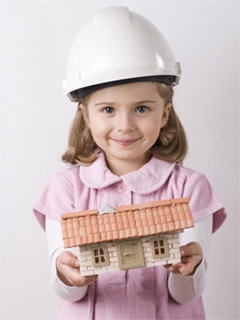One of the major obstacles dissuading people from actually undertaking that remodeling project they’ve always yearned for is the mess it makes. Sure, we might be able to bear the temporary discomfort of giving up an entire room in our home for a few weeks, knowing that things will be so much better in the end. But the greatest discomfort comes when we disperse the items of that room throughout our house. Moving the living room couch into the kitchen or the bathroom cabinets into the dining room can seriously hinder the functionality of those rooms as well and ruin any comfort we might seek elsewhere in our house. But don’t worry: your remodeling project doesn’t have to disrupt the rest of your house — at least, not if you properly utilize a self-storage unit.
Here’s how to use a storage unit to store the contents of the room under construction and make your remodeling project infinitely more comfortable.
1. Locate prospective facilities: finding a cheap self-storage unit in your neighborhood has never been easier thanks to the internet and the various storage search engines out there, so you should have no problem with that. But while you’re looking, remember that the monthly price isn’t your only consideration. Many storage facilities offer time-based deals in order to meet their scheduling goals. Some want to attract a high volume of short-term customers and so will offer short-term specials (like the second month’s rent for just $1) while others want to secure those who will stay for a longer period of time and will adjust their specials accordingly (like three months half-off). It just so happens that your remodel project is on a schedule too, so make sure you know your plans before you go out and search. It might be a good idea to give yourself an extra two weeks at the storage facility as a cushion: projects do run over schedule sometimes and you might not have time to visit the facility and move everything out just after the project finishes.
After you’ve determined your schedule, find the deal that best matches it. If your remodel will only take a few weeks, a short-term special is obviously best for you. If it’s going to last three-or-more months then look at longer-term deals. Another option is, once you’ve established a schedule you feel comfortable with, to negotiate with the facility manager for a lower price if you promise to lock-in for that amount of time. After all, your remodel isn’t likely to match up evenly with their monthly prices, so you might be able to save a little this way. Also, facilities almost always prefer the safe bet of knowing how long a customer will stay to begin with—it makes their lives easier.
2. Figure out what size unit you’ll need: while only you will be able to assess how much you’ll need to move out of your house, we can offer you some basic estimates of what size storage unit you’ll need based upon which room you’re remodeling. Storage units typically come in 5×5, 5×10, 10×10, 10×15, and 10×20 (that’s in feet) and generally range in height from between 8’-12’ (you might want to confirm height with your facility if you plan on packing the unit to the brim). Generally, 5×5 units are good for containing the contents of a small closet—think boxes, chairs, cabinets and electronics. 5×10 units will generally work for a walk-in closet or small bedroom remodel, and can hold things like mattress sets, dining room tables, and chairs. 10×10 units are good for large bedrooms, dining rooms, small kitchens and small living rooms, and will hold items like bedroom sets, refrigerators, and large drawers. 10×15 units are large enough to handle the contents of multiple rooms, large kitchens, or large living rooms, particularly if you have bulky furniture like big couches. They’re good for multiple bedroom sets, large appliances, patio sets and even vehicles. Finally, 10×20 units are large enough that they might even contain the contents of half your house—they’re good for anything and everything.
3. Packing your unit: Anything that can fit into a box should be put into one. Heavy items should go at the bottom of the box, and heavy boxes at the bottom of the stack. Don’t forget to use packing tape, and always pack boxes to the top or else they might collapse—if that makes the box too heavy, try pacing peanuts. Disassemble any furniture you can; taking the legs off tables and chairs can make you use of space much more efficient. Sofas should be turned on their sides so that they stand vertically. All furniture should be wrapped, and anything delicate must be padded as well.
So there it is: find the best deal for you, figure out which unit size you’ll need, and then properly pack your things. Follow those steps and your remodel can be infinitely more comfortable.
As a Design+Build General Contractor, I offer my clients a one-stop shopping approach to all of their home remodeling projects. I work with my clients from initial conception of a project through its completion. Every aspect of the job is managed by me and my professional crew. You will be included in every step of the design process until the final drawings are completed. No detail is left to chance. General Contractor Specializing in Kitchen & Bathroom Design and Remodeling Throughout the Los Angeles area.
Written By:

Offer Steuer
President
OTM Designs & Remodeling, Inc.
For more information you may contact us via email at service@otm1designs.com or you may call us at 888-981-1415. Our website is www.otm1designs.com.



